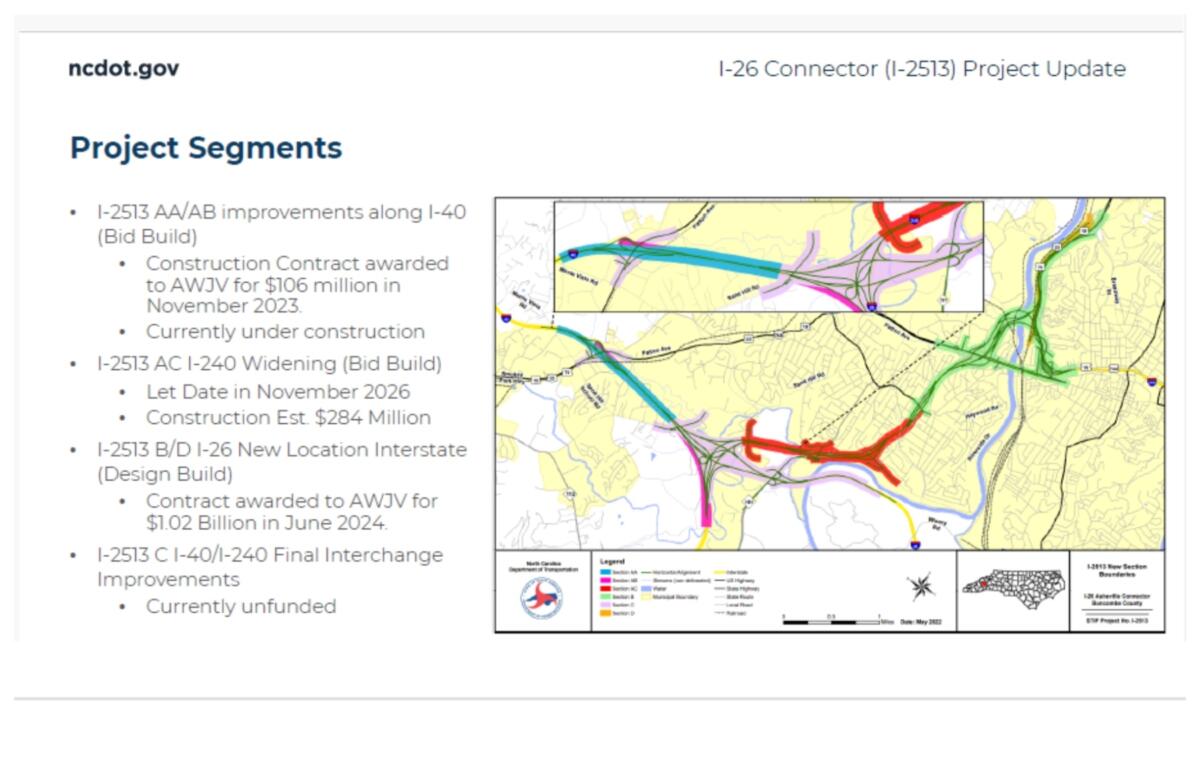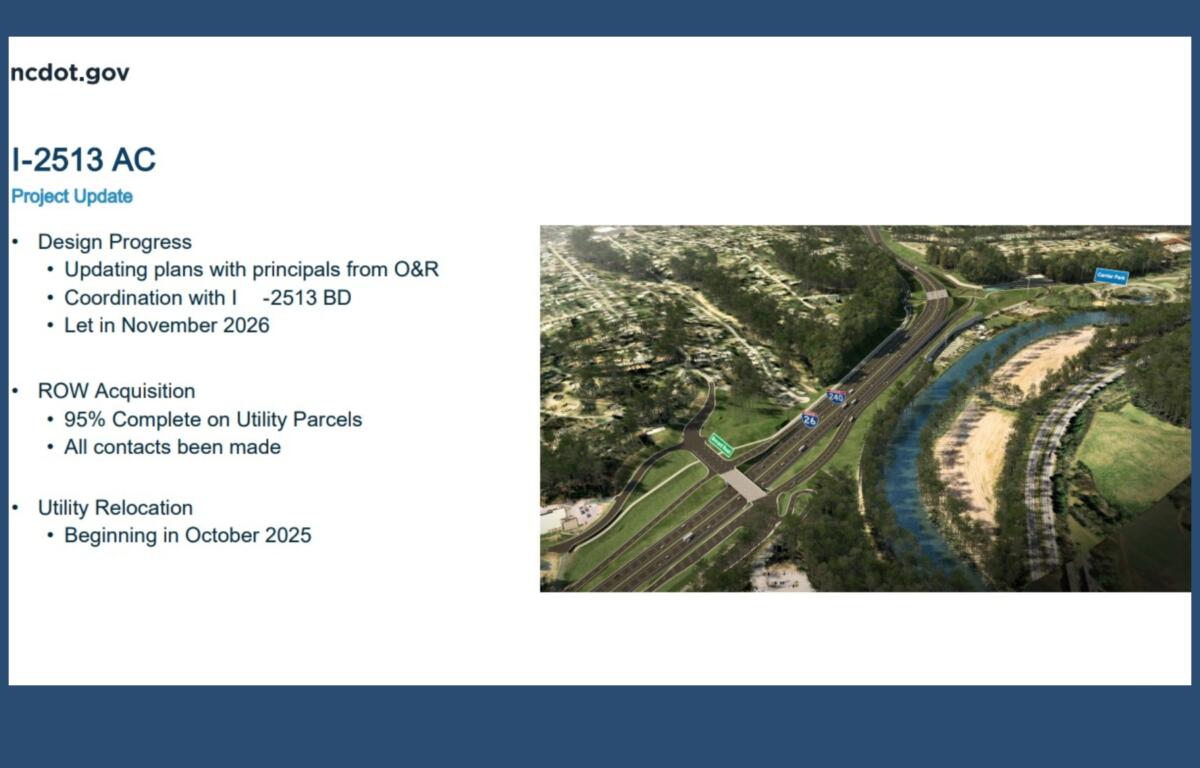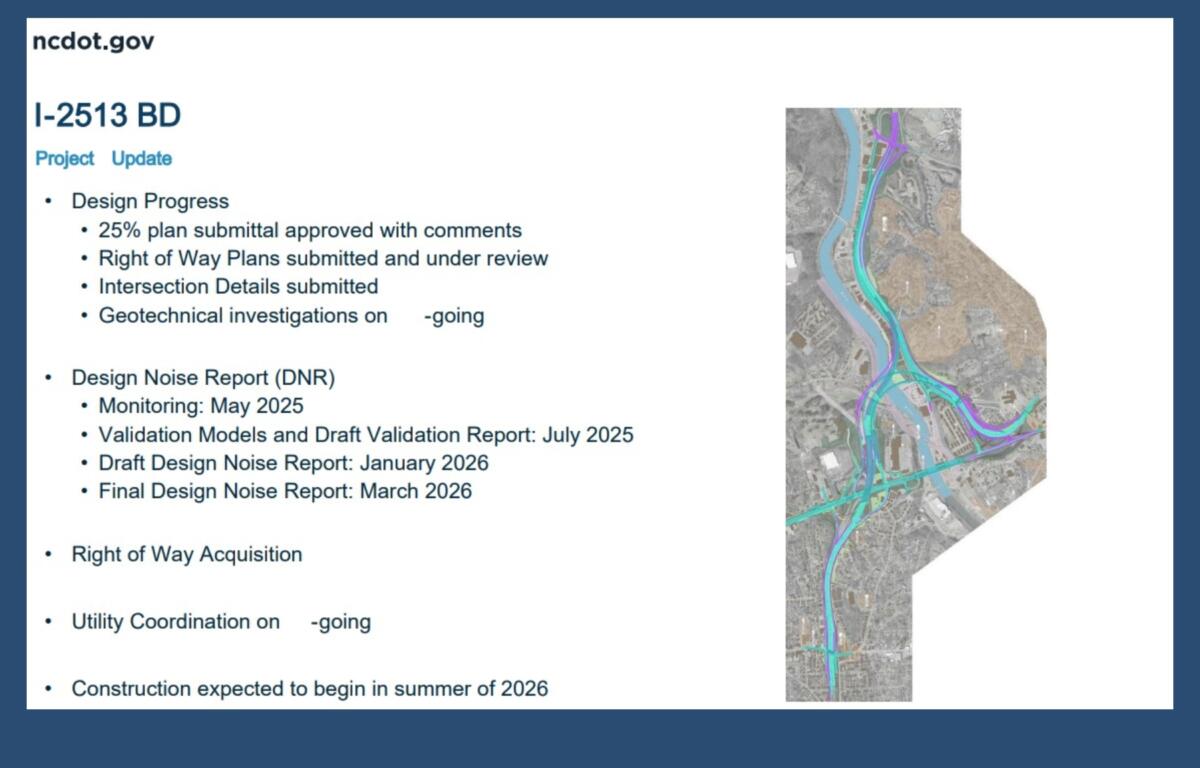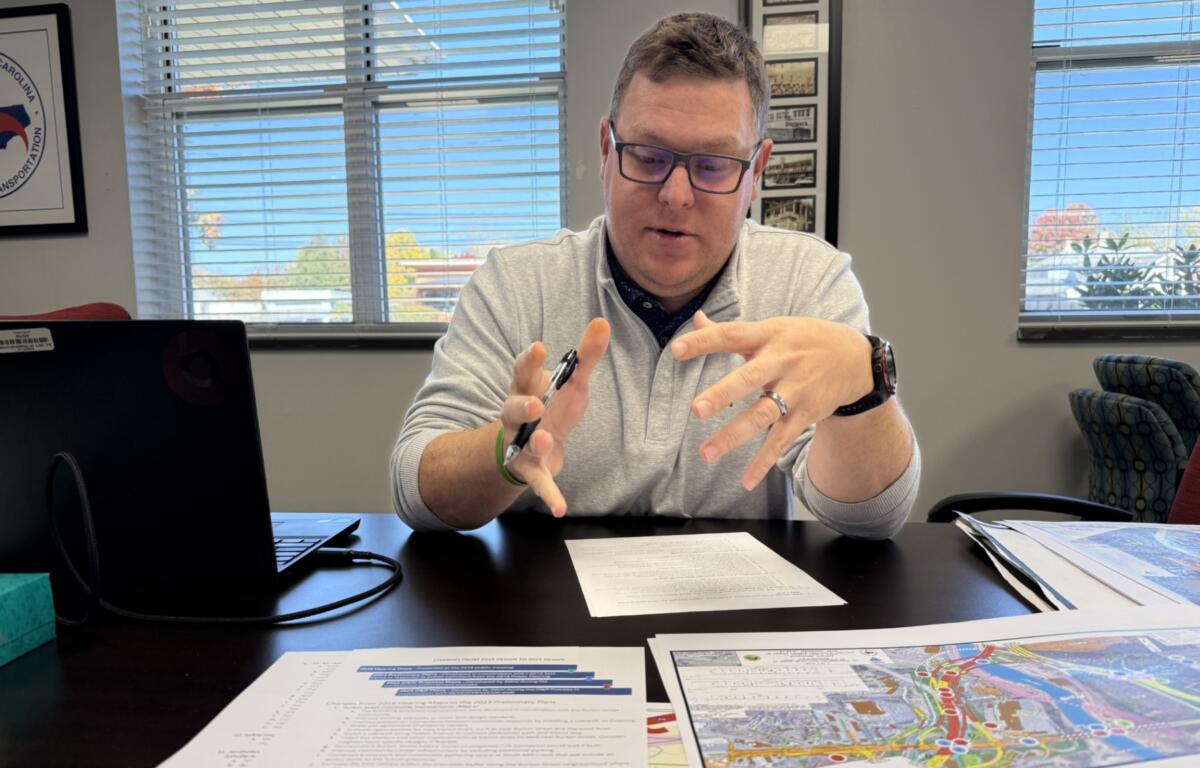ASHEVILLE, N.C. (828newsNOW) — After decades of planning, Asheville’s long-awaited Interstate 26 Connector is finally taking shape — and a clear finish line is in sight.
North Carolina Department of Transportation Division 13 Construction Engineer Nathan Moneyham walked through a complex web of projects Thursday in Asheville, painting a picture of the $2 billion-plus project.
“This is really four separate projects combined into one,” Moneyham said, pointing to a color-coded map of the corridor. “They’re all in different phases, and this map shows all four of those.”

He broke it down for clarity.
“AA and AB — that’s this blue and this kind of pink color on the map — they’re under construction right now. If you drive out there today, they’re building it. We’re replacing all the concrete pavement in that section, and there’s a new ramp for Smokey Park Highway. Basically, Smokey Park Highway will become an A and a B exit,” Moneyham said.
The largest piece, B and D, is “the one everybody talks about,” Moneyham said. “We’re in the design phase now, but construction starts next summer. This portion alone is $1.1 billion.”
Section B involves building a new interstate from the Haywood Road interchange north across the French Broad River. Section D consists of improvements to Riverside Drive between Hill and Broadway streets. These two sections are being built together as the “north section” of the project.

The next piece by schedule — AC — will widen I-240 from Haywood Road to Bear Creek and rebuild the Brevard and Amboy roads interchanges.
“Those actually will become a split interchange,” and frontage roads will connect the two, Moneyham explained.
The section is in design, with NCDOT now acquiring right-of-way.
“Utilities should start being moved in the next month or so. We’ll put it out to bid in November 2026, with construction to follow soon thereafter,” he said.

The last section, C, is currently unfunded.
“We’re trying to secure funding, but right now it’s just in the prioritization process,” Moneyham said.
That section is all the remaining work along the I-26 and I-40 interchange and some work along Smokey Park Highway.
“It’s currently going through our prioritization process to try and secure funding for that last remaining piece,” Moneyham said. “It was unsuccessful in the last round.”
Community coordination and design adjustments
Moneyham emphasized that community input has shaped the project at every step.
We reduced travel lanes, added bike lanes, created a multi-use path and minimized property impacts, he said. Some of these changes came from the 2018 public meeting, some from the 13-month confidential design-build process and some from a six-month optimization effort to lower costs.
That optimization saved $124 million.
“Without that effort, we wouldn’t be here. We would not have been able to move forward,” Moneyham said. “It was critical. And it wasn’t just about money — this project gives Asheville real benefits. You can ride or walk your bike from Haywood Road to Riverside Drive on the greenway alone. The multimodal connections are huge.”
Funding for the active contracts is secure.
“That risk has passed. All funded sections are green-lighted. This is the biggest project ever in North Carolina. More than double the next highest contract,” he said.
Moneyham addressed the environmental process as well.
“All major changes are reviewed with the Federal Highway Administration. They’ve been part of these decisions from the beginning. We’re confident the approvals will come through.”
Asked about the project timeline, he said, “Completion is set for October 2031. Archer Wright Joint Venture, our design-build contractor, is under contract to meet that date. Every day matters financially and for schedule.”
He returned repeatedly to the broader goal.
“The main purpose is connecting I-26 for reliable travel through Western North Carolina. But it also opens opportunities for Asheville –reduced local congestion, improved greenways and new development possibilities. Even small design choices — like the overpasses, the roundabout and bridge grades — have long-term impacts on the city and the community.”
Moneyham was candid about the scope and scale of the effort.
“Honestly, a lot of this project has been in discussion since 1989. There’s not much that hasn’t been looked at. Every idea from the public and design teams has been carefully considered, evaluated and either incorporated or explained why it won’t work. It’s a massive puzzle, but we’re committed to doing it right,” he said.


